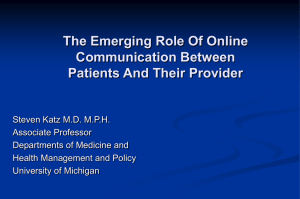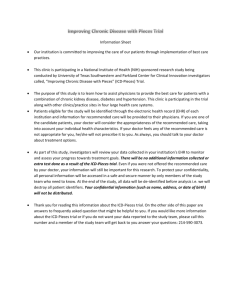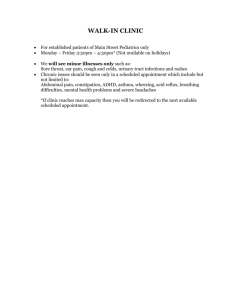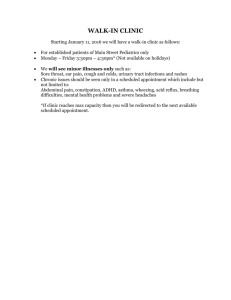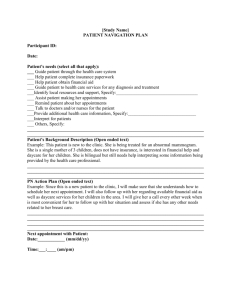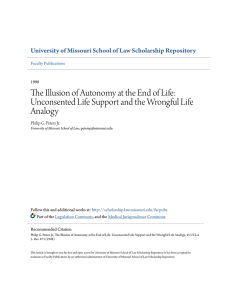Motivation Current online landscape Challenges Early Experiences
advertisement
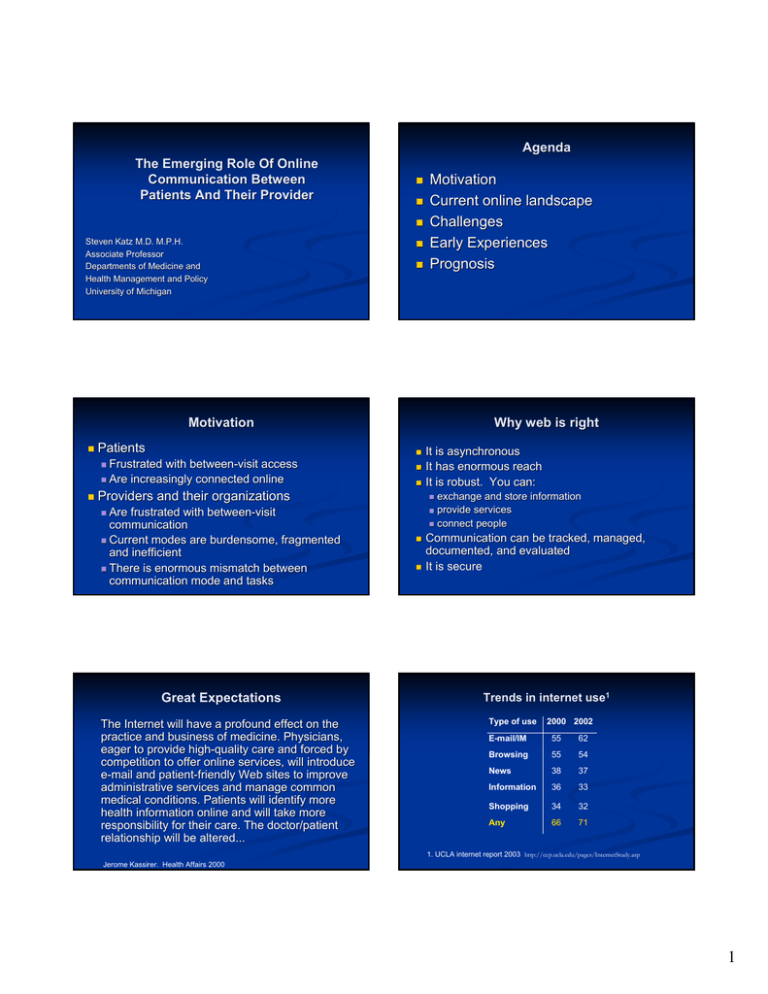
Agenda The Emerging Role Of Online Communication Between Patients And Their Provider Steven Katz M.D. M.P.H. Associate Professor Departments of Medicine and Health Management and Policy University of Michigan Motivation Current online landscape Challenges Early Experiences Prognosis Motivation Patients Frustrated with betweenbetween-visit access Are increasingly connected online Providers Why web is right and their organizations frustrated with betweenbetween-visit communication Current modes are burdensome, fragmented and inefficient There is enormous mismatch between communication mode and tasks exchange and store information provide services connect people Are Great Expectations The Internet will have a profound effect on the practice and business of medicine. Physicians, eager to provide highhigh-quality care and forced by competition to offer online services, will introduce e-mail and patientpatient-friendly Web sites to improve administrative services and manage common medical conditions. Patients will identify more health information online and will take more responsibility for their care. The doctor/patient relationship will be altered... It is asynchronous It has enormous reach It is robust. You can: Communication can be tracked, managed, documented, and evaluated It is secure Trends in internet use1 Type of use 2000 2002 E-mail/IM 55 62 Browsing 55 54 News 38 37 Information 36 33 Shopping 34 32 Any 66 71 1. UCLA internet report 2003 http://ccp.ucla.edu/pages/InternetStudy.asp Jerome Kassirer. Health Affairs 2000 1 Digital Divide UCLA Center for Communication Policy, 2003 Source: Pew Internet and American Life Surveys Message Volume* University of Michigan Primary Care 2002 Challenges Time period Patients Physicians (N=120) Email Phone 1 12 76 2 14 80 3 13 81 Providers 4 13 82 5 14 71 Lack experience Digital divide Workload Uncertain value of online communication Little consensus about communication management Organization Business model/ROI Building and integrating online communication tools No road map * weekly patient messages per 100 scheduled visits Components of a patient portal Dr. Katz: I am a patient of yours through Yellow Care Network. Generally, I am seen by Dr. Rufous T. Firefly but I have not been able to contact him nor have I been able to get an appointment to see any doctor in the Internal Medicine clinic. When I called I was simply told there were no available appointment times. I am currently experiencing intense pain when I urinate as a result of a bladder infection and would very much like to get a antibiotic to start treating this. The symptoms are constant urge to urinate and painful urination followed by blood in my urine at the end of the urination. Can you please facilitate an appointment to see a doctor in your staff or prescribe an antibiotic. I am not taking any other medicines at this time. ServiceService-related features Medication renewals, scheduling, forms, registration/billing A clinical communication tool Secure messaging A patient health record Populated from provider and patient data sources Medical record Patient: current meds, immunizations, health status information (e.g. blood sugar or blood pressure log) 2 Yellow brick road Emerald Cities Develop business model or buy communication tools Develop rollroll-out strategy Build Map relationships and workflow rules of engagement and exchange Develop education and promotion strategy Allocate provider effort during rollout Evaluate processes and outcomes Develop Patient1 and physician attitudes towards role of clinic staff in ee-communication StartStart-up Experiences Patient uptake is slow Online gap or patient selection Resource offsets are uncertain Clinician and staff acceptance is high “Cultural Divide” between patients and their clinicians Patients: “ OK for clinic staff to handle my [e-mail/Web] messages for my physician” Physicians: “OK for the clinic staff to handle patient [e-mail/Web] messages for me” Disagree (%) Email Web Patients 47 33 Physicians 14 12 1. Patients who reported regular use of e-mail 90 80 Prognosis: Good 70 60 50 40 Patients 30 % Preferring Mode Patient facility and access is growing 20 10 0 90 Visits 80 Phone Online 70 60 50 40 30 Physicians 20 10 0 increase in broadband access Better s ole Chest t or ty s xie es Anadn s or st ar ea ul Brestic t al rm A no PS Ab ap/ P in pa ck Ba e si d t Rx fec ef at ro th re So p Pa al t rm tes No SA P l ro te online communication tools Better clinical data systems Beginning of the “J curve” Uncertain business model 3
